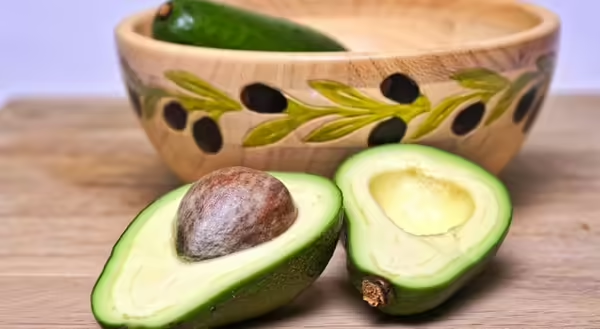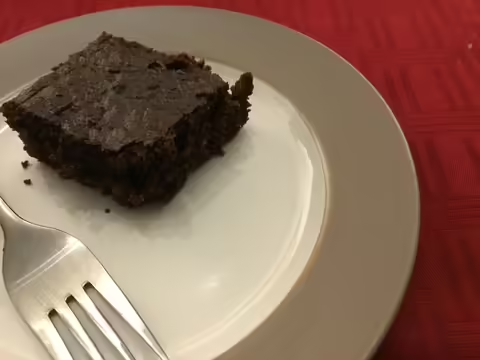
Back in my college classes, we students had opportunities to be food scientists and modify recipes. Since we were also nutrition and dietetic students, we were told to focus these modifications on ways to add nutrition, such as adding fiber, or improve the nutritional profile, such as lower sodium.
- Taste: To me, it tasted just like a yummy, chocolate brownie. So gooey!
- Smell: During baking, the brownie batter did smell like hot avocado. (Go figure!) It was an unusual smell, but not a bad one. Once the brownies cooled, I did not notice that smell anymore; just chocolate.
- Look: There are many brownie recipes that all look a little different. This is no exception. The original recipe has a drier, almost crackly top. The modified recipe had a wetter-looking surface.
- Nutrition: Since both avocado and butter are fat, the nutritional value of the recipe did not change much. So why would I replace butter with avocado? Avocados have mostly unsaturated or "liquid" fats, compared to butter that has saturated or "solid" fats. Eating a diet with more unsaturated fats benefits heart health, such as improving blood cholesterol numbers.
1 medium avocado
1 (4-oz) single-serve cup or 1/2 cup unsweetened applesauce
1/2 cup cocoa powder
3/4 cup sugar
2 eggs
1/3 cup all-purpose flour
1/3 cup whole-wheat flour
1/4 tsp baking soda
1. Preheat oven to 350°F.
2. Wash avocado. Run a knife around the pit, twist each side in opposite directions until they separate. Remove pit carefully. Scoop out avocado flesh into a medium bowl. Mash with a fork, potato masher, or food processor until smooth.
3. Stir in applesauce, cocoa powder, sugar, and eggs. Mix until smooth.
4. Stir in flours and baking soda until just moistened.
5. Pour into a greased 8 x 8-inch pan and bake for 35 minutes or until a toothpick inserted in the center is clean. (Toothpick may have a few chocolaty crumbs sticking to it, but is still cooked.)
Nutritional analysis per serving: 120 calories, 4g fat (1g saturated fat), 40mg sodium, 22g carbohydrate, 2g fiber, 3g protein
Original recipe | Nutritional analysis per serving: 130 calories, 5g fat (3g saturated fat), 40mg sodium, 21g carbohydrate, 2g fiber, 3g protein
Healthy Eats and Repeat
How much difference is there between canned and frozen foods? How should you cook venison? When is the best time to buy avocados? Get answers to these questions as well as other tips, tutorials and recipes for common kitchen foods and items with University of Illinois Extension Nutrition & Wellness Educator Caitlin Mellendorf’s blog Healthy Eats and Repeat. Build your best life. Trust Extension to help.
Caitlin Mellendorf is an Illinois Extension Nutrition and Wellness Educator serving DeWitt, Macon and Piatt Counties in Central Illinois. She is a Registered Dietitian and her work focuses on helping community members gain the knowledge, skills and tools to live healthier, more nutritious lifestyles. This includes providing programs and answering questions about heart health, diabetes, food safety, food preservation, grocery shopping and cooking. You can reach Caitlin by email at chuth2@illinois.edu or call 217.877.6042. Check out her nutrition blog Healthy Eats and Repeats for seasonal recipes and of an exploration of common kitchen foods.
